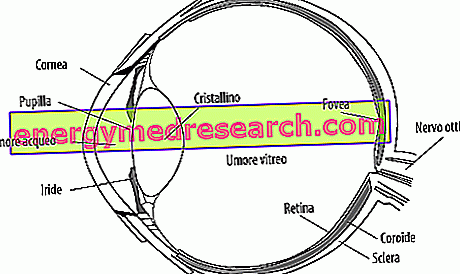Key points
Venous insufficiency is a pathological condition due to a difficult return of venous blood to the heart.
Causes
- Organic venous insufficiency: caused by pathological changes in the veins (eg stasis dermatitis, deep vein thrombosis), mainly due to defects in the valve function (eg varices)
- Functional venous insufficiency: due to a functional overload of the veins, subjected to overwork (eg lymphedema, reduced limb mobility)

The severity of symptoms varies from subject to subject depending on the severity of venous insufficiency: swollen ankles, calf cramps, edema of the involved limb, phlebitis, tingling in the legs, hyperpigmentation of the skin (eg purple), thickening of the skin, heaviness in the legs, itching, skin ulcers, varicose veins.
Among the most frequent complications associated with venous insufficiency include: cutaneous dystrophies / ulcerations, ischemia, risk of bacterial cellulitis, varicoflebitis.
Diagnosis
The diagnosis consists in direct medical observation of the lesions, and in the anamnesis. Sometimes, the patient is subjected to an ecodoppler for the evaluation of the functionality of the veins.
Therapies and Remedies
- General remedies: correction of eating habits and lifestyle, use of compression stockings, application of capillarotropic / protective creams
- Drugs: anticoagulants, phlebotonics, Profibrinolytics
- Surgical remedies: valvuloplasty, radiofrequency ablation / laser therapy
Definition of venous insufficiency
The term "venous insufficiency" defines a pathological condition due to a difficult return of venous blood to the heart. Venous insufficiency of the lower limbs triggers an increase in pressure in the capillaries, with subsequent edema, generalized hypoxia and lactacidemia (excessive presence of lactic acid in the blood).

Incidence
Venous insufficiency is a particularly widespread pathological condition in Western and industrialized countries, while in less developed areas, such as the poor countries of Africa and Asia, the phenomenon occurs to a much lesser extent.
Venous insufficiency is a current reality: in general, women are much more affected than strong sex. In Italy, for example, it is estimated that 30% of the female population and 15% of the male population is affected by venous insufficiency of variable entity.
From what reported in the journal European journal of vascular and endovascular surgery interesting estimates can be obtained:
- In young age, venous insufficiency affects 10% of males and 30% of females
- After the age of 50, the vascular phenomenon occurs in 20% of males and 50% of women.
From these data we understand not only that venous insufficiency mainly affects the fairer sex, but also and above all that the incidence of the disorder increases proportionally to age.
Causes and classification
Depending on the underlying cause, venous insufficiency can be classified into two macro-groups:
- ORGANIC VENOUS INSUFFICIENCY: caused by pathological changes in the veins. This category includes:
- Stasis dermatitis: persistent inflammation of the skin of the lower limbs, generated by a vascular stasis. Stasis dermatitis is a pathological condition typical of patients suffering from circulatory disorders in the veins of the legs; the disorder presents with chronic edema of the lower limbs, itching, excoriation and exudation.
- Restless legs syndrome (RLS): some patients with this syndrome subsequently develop venous insufficiency.
- Deep vein thrombosis: pathological condition due to the obstruction of a vein due to a thrombus (blood clot). A similar obstruction of the deep circle is responsible, in turn, for the difficult venous return; therefore we speak of deep venous insufficiency .
- Varicose veins: varicose veins are abnormal and permanent dilations of veins and arteries, an expression of an alteration in the efficiency of the venous valves.
To understand...
Alteration of the valvular capacity: this is probably the cause most implicated in venous insufficiency of the lower limbs, as well as the main risk factor for chronic venous insufficiency. In physiological conditions, the vein valves - placed in large-caliber vessels - prevent the reflux of blood favored by gravity, helping to regulate blood flow. Furthermore, the role of valves is essential to prevent the accumulation of blood in certain locations. When the system is altered in its balance, the valves do not guarantee correct blood circulation, and the blood tends to accumulate in the veins, creating varicose veins and venous insufficiency.
- FUNCTIONAL VENOUS INSUFFICIENCY: a condition due to a functional overload of the veins which, although in full health, are subjected to excessive work compared to their possibilities.
- Lymphedema: the stagnation of lymph in the various districts of the body, which characterizes lymphedema, is due to an impairment of the lymphatic system. Lymphedema requires overwork from the veins, therefore it may favor venous insufficiency.
- Reduced limb mobility (typical of subjects who remain in a static position for a long time → immobilization edema). Also the postural anomalies (flat foot, alterations of the morphology of the rachis etc.) force the veins to hyper-work, which can lead to venous insufficiency.
| Clinical classification of venous insufficiency | |
| Class 0 | Absence of visible or palpable clinical signs of venous disease |
| Class 1 | Presence of telangiectasias or reticular veins |
| Class 2 | Presence of varicose veins |
| Class 3 | Presence of edema |
| Class 4 | Trophic disorders of venous origin: pigmentation, eczema, hypodermitis |
| Class 5 | As class 4 with healed ulcers |
| Class 6 | As class 4 with active phase ulcers |
Risk factors
Some patients are more prone to venous insufficiency than others. What are the risk factors?
- Taking a static posture for a long time
- Pregnancy
- Hypertension
- Obesity
- Work in orthostatism (which requires standing and standing for a long time)
- Genetic predisposition
- Tobacco smoke
- Previous history of deep vein thrombosis
- Female sex
- Stature: tall subjects are more at risk of venous insufficiency
- Estrogen hormone therapy



